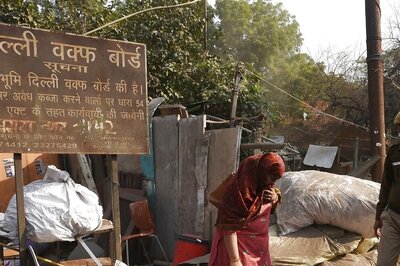
views
The new water tariff of Kerala Water Authority is an expected outcome of the ongoing water sector reform. The proposed water tariff is extremely high while considering the ‘real value’ of water. However, for KWA, this is the first step towards bringing price mechanism in drinking water supply. According to new water tariff, 0-5 kilolitres of water cost remains the same: Rs 20. For 5-10 kilolitres, the cost is Rs 20 and Rs 4 for every additional one kilolitre. And 10-20 kilolitres cost Rs 40 with Rs 5 for every additional kilolitre. For a medium-level consumer water tariff is going to be very high. The 20-30 kilolitres will cost Rs 90 with Rs 6 for every additional kilolitre. Those who are consuming more than 50 kilolitres per month will pay more, i.e Rs 390 with 25 per kilolitres. The Japan Bank of International Cooperation has funded an urban water supply scheme in KWA. The JBIC scheme was aimed at providing potable water to 43 million people. The project focuses on two urban water supply schemes (Thiruvananthapuram and Kozhikode) and five municipal areas.Thiruvananthapuram and Kozhikode have urban populations of 32,34,707 and 28,78,498 respectively (Kerala Human Development Report, 2005). According to official statistics, 83 percent of the urban population are covered with piped water in the districts of Thiruvananthapuram and Kozhikode, of which 92 percent and 88.8 percent of the households have access to water within 100 metres (Kerala Human Development Report 2005). Hence, the JBIC’s proposal for providing piped water to 43 million population does not mean the two urban centres alone, because 52 percent of population in Kerala live in urban areas. Thus, the municipal and nearby rural areas play a major role in JBIC project. Moreover, the cost of the augmentation scheme in conformity with the existing maintenance cost raises some critical questions. For instance, the total length of the supply chain of Thiruvananthapuram is 1608.35 km of which the JBIC is engaged in 413.43 km (source: KWA). The maintenance cost of Thiruvananthapuram urban water supply was Rs 2725 lakh in 2006-07, which is far less than the cost earmarked by JBIC. Thus, the entire JBIC experience so far raises some fundamental questions ie, is there any need for such a huge loan to essentially upgrade the existing infrastructure without any additional new connections that enhance access?Second, does upgrading exclusively under design and execution of foreign consultants lead to effective capacity building? The existing institutional capacity and technical expertise of KWA are sufficient enough to carry out the work. For instance, the design and supervision done by the consultancy alone cost Rs 53.91 crore so far. This clearly raises the question of technological dependency of the institutional system to provide drinking water. The JBIC scheme has put in place new component called Institutional Strengthening (IS). The main objectives of the programme are. Corporate planning Reduce the consumption of un-economical water supply.Restructuring of KWAAsset’s assessment Utility management developmentThe new water tariff is the result of IS programme. This high tariff would enable the KWA to operate in an economic mode ie, no-profit and no-loss. That means there will not to be any subsidy for water in the coming years, and KWA will have the political right to increase the tariff as per the requirements.(The writer is an assistant professor at the Tata Institute of Social Sciences. email: [email protected]




















Comments
0 comment